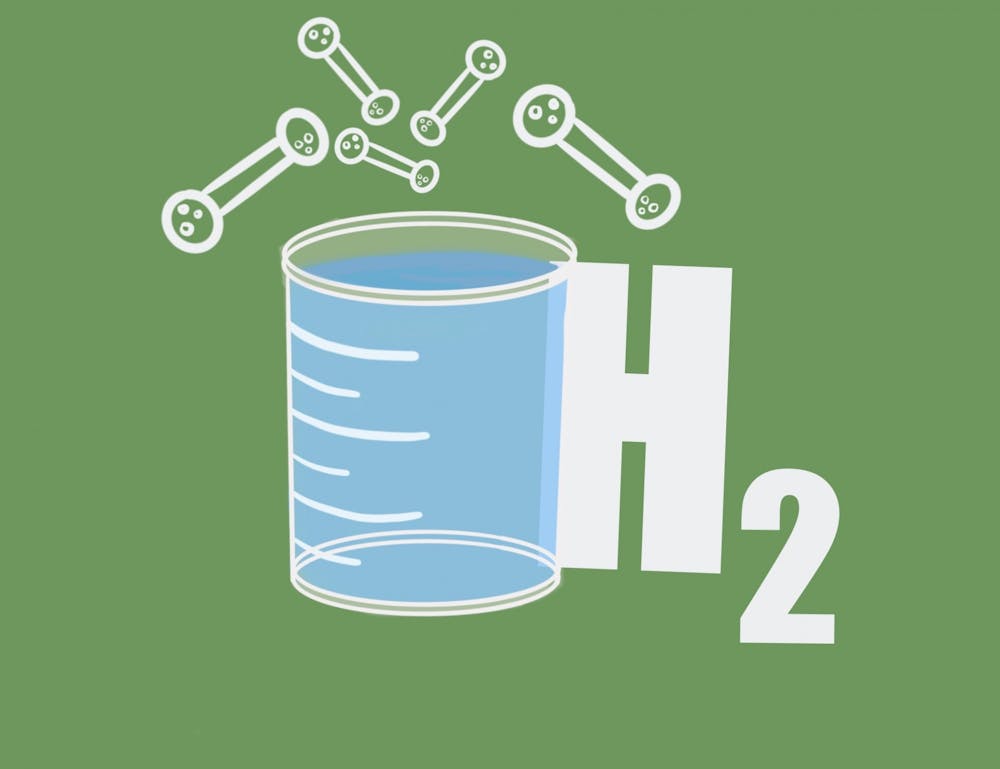The U.S. Energy Secretary awarded a University research team a $3.7 million grant last month in order to conduct research about improving and streamlining clean energy.
The use of dirty energy including oil, coal and gas, is contributing to land degradation, water pollution, increases in emissions and global warming. Given the current state of rising temperatures and the increasing levels of pollution, there is an apparent need to establish a cleaner energy source.
Motivated by the necessity to reduce our carbon footprint, President Biden has launched a goal for the United States to reach net-zero emissions by 2050. Leading this initiative is Asst. Chemistry Prof. Sen Zhang, along with Chemistry Prof. Thomas Brent Gunnoe and Asst. Chemistry Prof. Charles Machan.
“The grant will support a large collaborative effort,” Gunnoe said. “It actually involved four research teams here at U.Va. all in chemistry … then we have collaborators from Columbia University, the University of Delaware and Caltech.”
Machan discusses how this grant will enable the team to continue their research in new ways and with included collaboration.
“The money is really powerful because it’s going to fund researchers and materials for research groups here at U.Va. and another three [groups] at other institutions,” Machan said.
Third-year College student Liza Trundle, a member of U.Va. Sustainability’s Advocates Program, said it is important to devote time and energy to clean energy research.
“It is great to see U.Va. doing research for such an important current issue,” Trundle said. “Clean energy is very important and requires time and effort in order to be implemented, which is what the researchers are trying to accomplish.”
The research team is addressing a global issue. The overarching problem of a lack of sustainable energy contributes to the pollution of the environment and to climate change.
“The problem is currently the majority of hydrogen used for industry is generated from fossil fuels,” Zhang said. “[Fossil fuels] go through a splitting process to generate hydrogen, plus carbon dioxide.”
Hydrogen can be harnessed as an energy source. When hydrogen is split and carbon dioxide is produced, this puts more carbon dioxide into the atmosphere, therefore increasing emissions. This hydrogen is “dirty” as opposed to green hydrogen.
“Green hydrogen is hydrogen that’s produced from something that’s carbon-free like water, using an energy source that doesn’t produce any carbon, like solar electricity or wind electricity,” Machan said.
Zhang said the main purpose of the research grant as the next step in green hydrogen and clean energy.
“Our target is to generate hydrogen from water,” Zhang said.
Generating hydrogen from water yields a form of clean energy, or “energy that is not releasing more carbon into the atmosphere,” Machan said.
If clean energy was to replace that of fossil fuels, it would have to have the capacity to make hydrogen at the same rate, if not faster. This in turn requires a catalyst like an electrolyzer — a device used to speed the splitting of hydrogen from water.
“The problem with modern electrolyzers and our best electrolyzers is that they’re way too expensive,” Gunnoe said. “We need to learn the fundamental science required to make new catalysts for electrolyzers that are cheap, fast and that last for a very long time.”
“We are trying to understand how to optimize the performance of the catalyst sites we’re making based on cheap materials,” Gunnoe said. “Those catalysts can be optimized for integration into electrolyzers with all the other materials that are in there.”
Through the money provided to the research team by the Energy Secretary, Zhang, Gunnoe and Machan are hopeful and excited to continue their work on materials, catalysts and electrolyzers. If clean energy is cost effective and doesn’t inhibit the amount of energy produced relative to fossil fuels, it is much more likely to be employed both here at the University and nationwide. The widespread use of clean energy is what will allow the U.S. to reach zero net emissions by 2050.
“The impact of a grant of this size is that you can bring multidisciplinary solutions to a multi-faceted problem,” Machan said. “That’s the way you can make strides for big energy challenges like this.”







